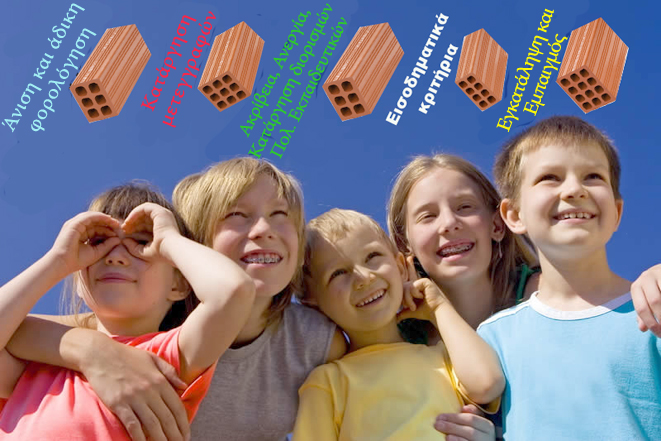
Η συγκατοίκηση πριν το γάμο είναι μια διαδεδομένη συνήθεια. Την επιλέγουν τα ζευγάρια για να «γνωριστούν καλύτερα» και την αποδέχονται οι γονείς τους είτε κατ ανάγκην είτε ως ένα λογικό βήμα των παιδιών τους.
Η πραγματικότητα είναι πως η συγκατοίκηση γίνεται για να ζήσουν τα παιδιά τη χαρά της επικοινωνίας που υπάρχει στο γάμο, χωρίς όμως να αναλάβουν τις δεσμεύσεις που τον συνοδεύουν, κρατώντας για τους εαυτούς τους το δικαίωμα να διαλύσουν τη σχέση τους όταν δυσκολευτούν, χωρίς συνέπειες και ευθύνες.
Η αντοχή όμως της σχέσης του ζευγαριού στο χρόνο δεν εξαρτάται από τις ιδιαίτερες συνήθειες που αναμένεται να αποκαλύψει η συγκατοίκηση αλλά από την ικανότητα επικοινωνίας, διαχείρισης της καθημερινότητας και την ωριμότητα που επιδεικνύουν οι σύντροφοι στις δυσκολίες.
Αυτά τα στοιχεία εύκολα αναγνωρίζονται σε ένα νέο, και δεν είναι για κανέναν λόγο απαραίτητο να προηγηθεί συγκατοίκηση για να γίνουν αντιληπτά. Σε όσους μάλιστα ζητήσουν την ευλογία του Θεού στη σχέση τους επιλέγοντας τον Ορθόδοξο γάμο, οι απρόβλεπτες και ανθρωπίνως αξεπέραστες δυσκολίες που ενδεχομένως να προκύψουν εξομαλύνονται πλήρως ακολουθώντας την Ποιμαντική-συμβουλευτική (κατά περίπτωση) της Εκκλησίας μας.
Από την άλλη πλευρά είναι διαπιστωμένο πως η καθημερινή τριβή με το σύντροφο σύντομα αφαιρεί τα στοιχεία του ρομαντισμού, του ενθουσιασμού, την επιθυμία αλλά και την αρχική ικανοποίηση από την σωματική επαφή, που αποτελεί ένα σοβαρό συνδετικό κρίκο. Συγχρόνως μεγαλοποιεί τις λογικές δυσκολίες.
Αυτή η σχέση απογυμνωμένη από τον αρχικό ενθουσιασμό, από κάθε πνευματική ευλογία και από το σεβασμό απέναντι σε αυτά που ο σύντροφος παραχώρησε, (τα συναισθήματά του, το χρόνο του, την ευθύνη στην πιθανή ύπαρξη παιδιού κ.α.), είναι ευαίσθητη στον παραμικρό κραδασμό. Οι δυσκολίες την οδηγούν σε αυτό για το οποίο επιλέχθηκε η συγκατοίκηση: Στο χωρισμό χωρίς ευθύνες και συνέπειες.
Είναι όμως αυτή η αλήθεια; Παρακάτω παρατίθεται από το American College of Pediatricians, η εμπειρία μιας χώρας που έχει βιώσει από ετών τις καταστροφικές συνέπειες της συγκατοίκησης, της διάλυσης της οικογένειας.
Οι περιγραφόμενες συνέπειες δεν αντιπροσωπεύουν αντικειμενικά την Ελληνική πραγματικότητα. Είναι όμως ενδεικτικές του τί σημαίνει η άκαιρη και χωρίς σωστές προϋποθέσεις συγκατοίκηση δύο νέων για τους ίδιους και τα παιδιά που ενδεχομένως θα έλθουν.

Αμερικανικό Κολλέγιο Παιδιάτρων: Διαπιστώσεις που αφορούν τη συγκατοίκηση των εφήβων και των νέων ενηλίκων πρίν το γάμο τους. Μια συζήτηση με τους γονείς των νέων παιδιών.
«Παρακαλούμε να επιδιώξετε τη δύσκολη συζήτηση για την συγκατοίκηση με τα παιδιά σας και να τα ενημερώσετε για τους κινδύνους από αυτήν καθώς και για τα ωφέλη του γάμου.»
Η έρευνα δείχνει ότι, η συγκατοίκηση των παιδιών πριν το γάμο τους αντί να χρησιμεύσει ως θετικό βήμα για έναν υγιή γάμο, μπορεί να προκαλέσει μεγάλη ζημιά σε μιά σχέση.
Έχει διαπιστωθεί από σχετικές μελέτες πως η συγκατοίκηση καθιστά πιο εύκολο το να χωρίσουν τα ζευγάρια ενώ συζούν, αλλά και το να διαζευχθούν εάν τελικά παντρευτούν. Οι σύντροφοι που συζούν είναι επίσης πιο πιθανό να μήν είναι πιστοί στη σχέση τους συγκριτικά με τους παντρεμένους, ενώ επιδεικνύουν συχνότερα βίαιη συμπεριφορά προς τον σύντροφό τους.
Ακολουθούν περισσότερα στοιχεία που πρέπει να ληφθούν υπόψη όταν συζητούμε με τα παιδιά μας σχετικά με τη πιθανή τους συγκατοίκηση:
- Οι έρευνες δείχνουν ότι μόνο το ένα τρίτο των συγκατοικούντων ζευγαριών θα παντρευτεί μέσα στα επόμενα 3 χρόνια και λιγότερο από το 60% στα επόμενα δέκα χρόνια.
- Τα ζευγάρια που απλά ζουν μαζί, αναφέρουν υψηλότερα επίπεδα άγχους και κατάθλιψης σε σχέση με τα ζευγάρια που είναι παντρεμένα. Τα παιδιά αυτών των ζευγαριών έχουν επίσης υψηλότερα επίπεδα κατάθλιψης και άγχους.
- Τα ανύπαντρα ζευγάρια είναι πιο πιθανό να βιώσουν την απιστία απ 'ό, τι τα παντρεμένα ζευγάρια.
- Η φτώχεια είναι συχνότερη στις γυναίκες που συζούν. Οι άνδρες συντροφοί τους είναι λιγότερο πιθανό να εργάζονται και πιο πιθανό να σπαταλούν τον ελεύθερο χρόνο τους για την προσωπική τους ευχαρίστηση, σε σχέση με τους παντρεμένους άνδρες. Τα παιδιά τους βιώνουν επίσης περισσότερη φτώχεια.
- Στα ζευγάρια που συγκατοικούν αναφέρονται υψηλότερα ποσοστά κατάχρησης αλκοόλ.
- Στις σχέσεις συμβίωσης εκτός γάμου διαπιστώνεται βία και επιθετικότητα 2 έως 5 φορές μεγαλύτερη από εκείνη των εγγάμων σχέσεων.
- Όσοι συγκατοικούν είναι λιγότερο πιθανό να παντρευτούν κάποτε, και αν παντρευτούν, αναφέρουν πως είναι λιγότερο ικανοποιημένοι σε σχέση με αυτούς που παντρεύονται χωρίς καταρχήν συγκατοίκηση.
- Τα ζευγάρια που συγκατοικούν έχουν φτωχότερη επικοινωνία μεταξύ τους σε σχέση με τα παντρεμένα ζευγάρια.
- Οι γυναίκες στη συγκατοίκηση έχουν 10 φορές περισσότερες πιθανότητες να κάνουν έκτρωση από ό, τι οι έγγαμες γυναίκες και ως συνέπεια να υποφέρουν και από αυτή την κακή τους επιλογή. Στην πραγματικότητα, στο 89% των περιπτώσεων έκτρωσης οι γυναίκες συζούσαν είτε πρίν, είτε κατά την έκτρωση, είτε μετά από αυτήν, και πάνω από το 40% εξ αυτών, είχαν συζήσει με τουλάχιστον 3 διαφορετικούς άνδρες.
- Μόνο 1 στις 5 γυναίκες που θα μείνουν έγκυοι ενώ θα συγκατοικούν θα παντρευτούν μέσα στους επόμενους 6 μήνες.
- Τα ζευγάρια που συγκατοικούν κατά τη γέννηση του παιδιού τους είναι πιο πιθανό να διαλυθούν σε σχέση με όσα είναι παντρεμένα, και το 50% βρίσκεται σε διάσταση ή έχει λάβει διαζύγιο πρίν το παιδί τους γίνει 3 χρονών.
- Τα παιδιά των ζευγαριών που συγκατοικούν διατρέχουν μεγαλύτερο κίνδυνο για:
- Να γεννηθούν πρόωρα.
- Να έχουν κακή επίδοση στο σχολείο
- Να εμπλακούν σε άσχημες παρέες και να έχουν παραβατική συμπεριφορά.
- Να κάνουν κατάχρηση οινοπνεύματος και ναρκωτικών (τόσο από δική τους έκθεση όσο και από έκθεση εξαιτίας των γονέων τους )
- Υπάρχει κακοποίηση των παιδιών, (και σεξουαλική) , η οποία συμβαίνει σε 8πλάσιο ποσοστό όταν η μητέρα έχει φίλο που μένει μαζί της στο σπίτι , παρά όταν αυτός είναι παντρεμένος με αυτή.
- Πρώιμος θάνατος: Ένα παιδί που συλλαμβάνεται από μητέρα που συζεί, είναι 10 φορές πιο πιθανό να αποβληθεί από ό, τι εάν γίνει η σύλληψή του εντός γάμου.
- Τα παιδιά με γονείς που συζούν είναι 2 φορές πιο πιθανό να αυτοκτονήσουν. Τα κορίτσια που ζουν μόνο με τον έναν γονέα τους ( το οποίο είναι η πιθανότερη κατάληξη εάν οι γονείς συγκατοικούσαν παλαιότερα ), είναι 3 φορές πιο πιθανό να πεθάνουν από υπερβολική δόση ναρκωτικών ή αλκοόλ, ενώ τα αγόρια είναι 5 φορές πιο πιθανόν σε σχέση με τα παιδιά που ζουν με παντρεμένους γονείς.
- Τα παιδιά που δεν ανατρέφονται από έγγαμους γονείς έχουν περισσότερες πιθανότητες να συγκατοικήσουν και τα ίδια και να διαζευχθούν, επαναλαμβάνοντας τον κύκλο για πολλές γενεές.
Οι γιατροί του American College of Pediatricians , παροτρύνουν τους εφήβους ασθενείς τους να αποφύγουν τη συγκατοίκηση και να αναγνωρίσουν τα οφέλη που θα τους προσφέρει ο γάμος για όλη τους τη ζωή.
Ενθαρρύνουν επίσης τους γονείς των εφήβων, να επιδιώξουν αυτές τις σκληρές και δύσκολες συνομιλίες με τα παιδιά τους και να τα εκπαιδεύσουν ώς προς τους κινδύνους της συγκατοίκησης.
Η εγκράτεια των σεξουαλικών σχέσεων των παιδιών μέχρι το γάμο τους, επιφέρει σωματικά, συναισθηματικά, και ακόμη πνευματικά οφέλη τόσο στο ίδιο το ζευγάρι όσο και στα παιδιά τους.
(Πηγή: American College of Pediatricians)

Αμερικανικό Κολλέγιο Παιδιάτρων: Διαπιστώσεις που αφορούν τη συγκατοίκηση των νέων πρίν το γάμο τους. Μια προληπτική συζήτηση με τους έφηβους και τους νέους ενήλικες.
“Σεβαστείτε το σώμα και την ψυχή σας. Φυλάξτε τα για το γάμο σας και για τον άνθρωπο που θα σας τιμήσει με την παντοτινή του προτίμηση και αφοσίωση. Θα έχετε τεράστια σωματικά και συναισθηματικά οφέλη στη ζωή σας.”
Καθώς αρχίζετε να κάνετε τις πρώτες σας γνωριμίες και να σκέφτεστε για μια μελλοντική σχέση που θα σας οδηγήσει στο γάμο, η ζωή της ελεύθερης συγκατοίκησης μαζί με το φίλο ή τη φίλη σας μπορεί να φαίνεται στα μάτια σας ελκυστική. Μπορεί ακόμη να θεωρείτε ότι είναι όντως ένα πρακτικό και θετικό βήμα προς μια υγιή σχέση γάμου.
Στην πραγματικότητα, αυτή η αντίληψη απέχει πολύ από την αλήθεια. Η συμβίωση πριν από το γάμο (η συγκατοίκηση δηλαδή), μπορεί να προκαλέσει σημαντική ζημία σε εσάς προσωπικά αλλά και στη σχέση σας. Η συγκατοίκηση κανει πιο πιθανό για τα ζευγάρια να τα χαλάσουν, ενώ πιθανότατα θα πάρουν διαζύγιο εάν τελικά παντρευτούν. Οι σύντροφοι που συγκατοικούν είναι πιο πιθανό να είναι άπιστοι ο ένας στον άλλο σε σχέση με τους παντρεμένους, και 2-5 φορές πιο πιθανό να είναι βίαιοι απέναντι στον σύντροφό τους.
Παρακάτω ακολουθούν περισσότερα δεδομένα σχετικά με τη συγκατοίκηση.
- Νεαροί μου, θέλετε να είστε παρόντες για τα παιδιά σας κάθε μέρα; Κοπέλλες μου, θέλετε τα παιδιά σας να έχουν πατέρα που να είναι καθημερινά δίπλα τους ενώ μεγαλώνουν; Λοιπόν, δυστυχώς, μόνο το 1 / 3ο των παιδιών των οποίων οι γονείς ζούσαν μαζί ανύπαντροι κατά τη γέννησή τους, εξακολουθούν να έχουν και τους δύο γονείς τους στο σπίτι στην ηλικία των 15 ετών.
- Τα ζευγάρια που συγκατοικούν είναι λιγότερο πιθανό να παντρευτούν κάποτε, και αν παντρευτούν, δεν είναι τόσο ικανοποιημένα όπως εκείνα που παντρεύονται χωρίς συγκατοίκηση.
- Τα ζευγάρια που συζούν, αναφέρουν υψηλότερα επίπεδα άγχους και κατάθλιψης σε σχέση με τα ζευγάρια που είναι παντρεμένα. Τα παιδιά τους αντιμετωπίζουν τους ίδιους κινδύνους.
- Οι γυναίκες που αποδέχονται τη συγκατοίκηση, έχουν περισσότερες πιθανότητες να ζήσουν ή να πλησιάσουν στη φτώχεια. Οι σύντροφοί τους είναι λιγότερο πιθανό να εργαστούν και είναι πιο πιθανό πως θα ξοδεύουν τον ελεύθερο χρόνο τους για την προσωπική τους ευχαρίστηση και όχι για το οικογενειακό καλό, σε σχέση με τους παντρεμένους άνδρες. Τα παιδιά τους ζούν επίσης συχνότερα στη φτώχεια.
- Τα ζευγάρια που συζούν είναι πιο πιθανό να χωρίσουν σε σύγκριση με τα παντρεμένα ζευγάρια.Πραγματικά έως και το 50% ζούν χωριστά ή έχουν λάβει διαζύγιο μέχρι το πρώτο τους παιδί να γίνει 3 ετών. Λόγω των υψηλότερων ποσοστών διαζυγίου, τα παιδιά που γεννιούνται από ζευγάρια που συζούν είναι πολύ πιθανό να υποφέρουν από την απώλεια του πατέρα τους, και να βιώσουν αυτή την απώλεια αρκετές φορές καθώς πολλοί "πατέρες" θα εναλλάσονται διαδοχικά.
- Τα παιδιά είναι πολύ πιο πιθανό να υποστούν βιασμό από έναν μή συγγενή, έναν φίλο της μητέρας, που δεν είναι ο πατέρας τους.
- Τα παιδιά ζευγαριών που συγκατοικούν παρουσιάζουν υψηλότερη συχνότητα σχολικής αποτυχίας, εμπλοκής με το νόμο, κατάχρησης οινοπνεύματος και ναρκωτικών, αυτοκτονίας και συμπεριφοράς κακοποίησης άλλων παιδιών.
- Οι γυναίκες που συζούν, έχουν 10 φορές περισσότερες πιθανότητες να κάνουν έκτρωση από ό, τι οι έγγαμες γυναίκες και ως εκ τούτου υποφέρουν από την θνησιμότητα και τη νοσηρότητα της άμβλωσης.
Οι γιατροί του American College of Pediatricians, σας παροτρύνουν να αποφύγετε τη συγκατοίκηση και να αναγνωρίσετε τα οφέλη του γάμου για τη προσωπική σας ζωή, για τον μελλοντικό σύζυγό σας και τα παιδιά σας. Μην ξεγελιέστε από τα ΜΜΕ, τα social media, τις ταινίες και τους "φίλους" που κάνουν τη συμβίωση να φαίνεται αβλαβής και ευτυχισμένη.
Σεβαστείτε το σώμα και την ψυχή σας και φυλάξτε τα για το γάμο σας και για τον άνθρωπο που θα σας τιμήσει με την παντοτινή του προτίμηση και αφοσίωση. Θα έχετε τεράστια σωματικά και συναισθηματικά οφέλη στη ζωή σας. Κρατηθείτε σταθεροί και δυνατοί, μακριά από αυτές τις επιλογές.
(Πηγή: http://www.acpeds.org/wordpress/wp-content/uploads/Cohabitation-handout-for-teens-and-young-adults.pdf)

Οι πληροφορίες που δίδονται στα ανωτέρω άρθρα και η αντίστοιχη βιβλιογραφική ενημέρωση για το θέμα της συγκατοίκησης πρίν το γάμο, βρίσκονται στις παρακάτω ιστοσελίδες, από τις οποίες και μπορείτε να ενημερωθείτε εκτενέστερα για το θέμα.
Αναφορές:
[1] P.Y. Goodwin, W.D. Mosher, A. Chandra. Marriage and Cohabitation in the United States: A Statistical Portrait Based on Cycle 6 (2002) of the National Survey of Family Growth. National Center for Health Statistics. Vital and Health Statics 2010; 23(8). accessed at http://www.cdc.gov/nchs/data/series/sr_23/sr23_028.pdf on Feb 16, 2012.
[2] Andrew Cherlin, “The Deinstitutionalization of American Marriage,” Journal of Marriage and Family 66 (Nov 2004):849.
[3] J.C. Abma, G.M. Martinez, C.E. Copen. Teenagers in the United States: Sexual Activity, Contraceptive Use, and Childbearing, National Survey of Family Growth 2006-2008. National Center for Health Statistics. Vital and Health Statistics. 2010; 23-30.
[4] (ccxxxiv-GU page 56). N. Glenn, E. Marquardt. Hooking Up, Hanging Out, and Hoping for Mr. Right: College Women on Mating and Dating Today. New York, NY: Institute of American Values; 2001. Available at: http://www.americanvalues.org/Hooking_Up.pdf. Accessed August 11, 2010.
[5] Edward Laumann, Robert T. Michjael, and Gina Kolata, Sex in America (New York: Time Warner 1995),75.
[6] P.Y. Goodwin, W.D. Mosher, A. Chandra. Marriage and Cohabitation in the United States: A Statistical Portrait Based on Cycle 6 (2002) of the National Survey of Family Growth. National Center for Health Statistics. Vital and Health Statics 2010; 23(8). accessed at http://www.cdc.gov/nchs/data/series/sr_23/sr23_028.pdf on Feb 16, 2012.
[7] G.K. Rhoades, S.M. Stanley, H.J. Markman. The Pre-Engagement Cohabitation Effect: A Replication and Extension of Previous Findings. Journal of Family Psychology 2009; 23:107-111.
[8] C. T. Kenney, S.S. McLanahan, “Why are cohabitating relationships more violent than marriages?” Demography (Feb 2006):43(1):127-40.
[9] Marin Clarkberg, Ross M. Stolzenberg, and Linda J. Waite, “Attitudes, Values and Entrance in to Cohabitational Versus Marital Unions,” Social Forces 4 (1995):609-32.
[10]Read it Shackelford, T. K. (2001). Cohabitation, marriage, and murder: Woman-killing by male romantic partners. Aggressive Behavior, 27 , 284-291 accessed on March 8,2012 at http://www.toddkshackelford.com/downloads/Shackelford-AB-2001.pdf, T.B. Heaton. Factors Contributing to Increasing Marital Stability in the United States. Journal of Family Issues 2002; 23:392- 409.
[11] C. T. Kenney, S.S. McLanahan, “Why are cohabitating relationships more violent than marriages?” Demography (Feb 2006):43(1):127-40. *calculated from raw data in Table 2.
[12] Kersti Yllo and Murray A. Straus, “Interpersonal Violence Among Married and Cohabitating Couples,” Family Relations (1981):30.
[13] Andrew Cherlin, “The Deinstitutionalization of American Marriage,” Journal of Marriage and Family 66 (Nov 2004):849.
[14] Kamp Dush, Claire M. et al. 2003. “The Relationship Between Cohabitation and Marital Quality and Stability: Change Across Cohorts?” Journal of Marriage and Family 65: 539-549.
[15] Manning, W. D., & Cohen, J. A. (2012). Premarital cohabitation and marital dissolution: An examination of recent marriages. Journal of Marriage and Family (April 2012):74:377–387.
[16] Reinhold, S. (2010). Reassessing the link between premarital cohabitation and marital instability. Demography (August 2010):47:719–733.
[17] Kuperberg A. Age at Coresidence, Premarital Cohabitation, and Marriage Dissolution: 1985–2009. J Marriage and Family 76 (Mar 2014):352-369.
[18] C. T. Kenney, S.S. McLanahan, “Why are cohabitating relationships more violent than marriages?” Demography (Feb 2006):43(1):127-40. *(115 of 303 cohabiters and 206 of 1032 married up to 5 years at first interview; 47 of 147 cohabiters and 36 of 155 married under one year at first interview. See Table 2.).
[19] Abma JC, Chandra A, Mosher WD, et al, Fertility, family planning and women’s health: new data from the 1995 National Survey of Family Growth. Vital Health Stat 23. No. 19. Hyattsville, MD: National Center for Health Statistics, US Dept of Health and Human Services; 1997. DHHS Publications No. (PHS) 97-1995. Available at http://www.cdc.gov/nchs/data/series/sr_23/sr23_019.pdf. Accessed Feb 26, 2012.
[20] P.Y. Goodwin, W.D. Mosher, A. Chandra. Marriage and Cohabitation in the United States: A Statistical Portrait Based on Cycle 6 (2002) of the National Survey of Family Growth. National Center for Health Statistics. Vital and Health Statics 2010; 23(8).Tables 16 and 17.
[21] Casey E. Copen, Ph.D.; Kimberly Daniels, Ph.D.; Jonathan Vespa, Ph.D.and William D. Mosher, Ph.D., First Marriages in the United States: Data From the 2006–2010 National Survey of Family Growth. Division of Vital Statistics. U.S. DEPARTMENT OF HEALTH AND HUMAN SERVICES Centers for Disease Control and Prevention National Center for Health Statistics Number 49 March 22, 2012 at http://www.cdc.gov/nchs/data/nhsr/nhsr049.pdf accessed March 28, 2012
[22] Casey E. Copen, Ph.D.; Kimberly Daniels, Ph.D.; Jonathan Vespa, Ph.D.and William D. Mosher, Ph.D., First Marriages in the United States: Data From the 2006–2010 National Survey of Family Growth. Division of Vital Statistics. U.S. DEPARTMENT OF HEALTH AND HUMAN SERVICES Centers for Disease Control and Prevention National Center for Health Statistics Number 49 March 22, 2012 at http://www.cdc.gov/nchs/data/nhsr/nhsr049.pdf accessed March 28, 2012.
[23] J.R. Kahn, K.A. London. Premarital Sex and the Risk of Divorce. Journal of Marriage and Family 1991; 53:845-855.
[24] Judith Treas and Deirdre Giesen, “Sexual Infidelity among Married and Cohabiting Americans,” Journal of Marriage and the Family 62, no. 1 (2000): 54.
[25] W. Mosher, A. Chandra, J. Jones. Sexual Behavior and Selected Health Measures: Men and Women 15-44 Years of Age, United States, 2002. Advance Data. 2005; 362: 1-54.accessed at http://www.cdc.gov/nchs/data/ad/ad362.pdf on February 20, 2012.
[26] P.Y. Goodwin, W.D. Mosher, A. Chandra. Marriage and Cohabitation in the United States: A Statistical Portrait Based on Cycle 6 (2002) of the National Survey of Family Growth. National Center for Health Statistics. Vital and Health Statics 2010; 23(8). accessed at http://www.cdc.gov/nchs/data/series/sr_23/sr23_028.pdf on Feb 16, 2012.
https://www.acpeds.org/the-college-speaks/position-statements/societal-issues/cohabitation-part-2-of-2
Αναφορές:
1. Osborne C, Manning WD, Stock PJ. Married and cohabiting parents’ relationship stability: A focus on race and ethnicity. J Marriage Fam. 2007; 69: 1345-1366, 1354 Table 2.
2. Anderson J. The Impact of Family Structure on the Health of Children: Effects of Divorce. May 12, 2014. www.ACPeds.org. Accessed May 2014.
3. Goodwin PY, Mosher WD, Chandra A. Marriage and cohabitation in the United States: A statistical portrait based on cycle 6 (2002) of the National Survey of Family Growth. National Center for Health Statistics. Vital and Health Statistics. 2010; 23(8). http://www.cdc.gov/nchs/data/series/sr_23/sr23_028.pdf. Accessed February 16, 2012.
4. Copen CE, Daniels K, Vespa J, Mosher WD. First marriages in the United States: Data from the 2006–2010 National Survey of Family Growth. Division of Vital Statistics. U.S. Department of Health and Human Services Centers for Disease Control and Prevention. National Center for Health Statistics. 2012; 49. http://www.cdc.gov/nchs/data/nhsr/nhsr049.pdf. Accessed September 10, 2013.
5. 2006–2010 National Survey of Family Growth National Health Statistics Reports. 2013; 64: 5-6. http://www.cdc.gov/nchs/data/nhsr/nhsr064.pdf. Accessed May 9, 2014.
6. The Stillbirth Collaborative Research Network Writing Group. Causes of death among stillbirths. JAMA. 2011; 306(22): 2459-2468.
7. Bumpass L, Lu HH. Trends in cohabitation and implications for children’s family contexts in the United States. Popul Stud. 2000; 54(1): 29-41.
8. Family structure and children’s health in the United States: Findings from the National Health Interview Survey, 2001-2007. Vital Health Statistics. U.S. Department of Health and Human Services. Centers for Disease Control and Prevention. National Center for Health Statistics. 2010; 10(246). http://www.cdc.gov/nchs/data/series/sr_10/sr10_246.pdf . Accessed March 5, 2012.
9. Copen CE, Daniels K, Vespa J, Mosher WD. First marriages in the United States: Data from the 2006–2010 National Survey of Family Growth. Division of Vital Statistics. U.S. Department of Health and Human Services Centers for Disease Control and Prevention. National Center for Health Statistics. 2012; 49. http://www.cdc.gov/nchs/data/nhsr/nhsr049.pdf. Accessed September 10, 2013.
10. Goodwin PY, Mosher WD, Chandra A. Marriage and cohabitation in the United States: A statistical portrait based on cycle 6 (2002) of the National Survey of Family Growth. National Center for Health Statistics. Vital and Health Statistics. 2010; 23(8): Tables 13,14. http://www.cdc.gov/nchs/data/series/sr_23/sr23_028.pdf. Accessed September 10, 2013.
11. Osborne C, Manning WD, Stock PJ. Married and cohabiting parents’ relationship stability: A focus on race and ethnicity. J Marriage Fam. 2007; 69: 1345-1366.
12. Bumpass LL, Sweet JA. National estimates of cohabitation. Demography. 1989; 26: 615-625. Lichter DT, Qian Z, Mellott LM. Marriage or dissolution? Union transitions among poor cohabitating women. Demography. 2006; 43(2): 223-240. Bumpass L, Lu HH. Trends in cohabitation and implications for children’s family contexts in the United States. Popul Stud. 2000; 54(1): 29-41.
13. Data from The Fragile Families and Child Wellbeing Study (Fragile Families) reported in Osborne C, Palmo N. Do children benefit if their unmarried parents marry? A focus on young children’s behavior. LBJ School of Public Affairs, Population Research Center, University of Texas at Austin. https://www.utexas.edu/lbj/chasp/research/downloads/Doc6marriage_timing_.pdf Published June 2009. Accessed May 9, 2014.
14. Kenney CT, McLanahan SS. Why are cohabitating relationships more violent than marriages? Demography. 2006; 43(1):127-140, *calculate from raw data in Table 2.
15. Martin JA, Hamilton BE, Michelle JK. Osterman MJK, et al. Births: Final Data for 2012 National Vital Statistics Reports. 62(9) Dec 30, 2013 Tables 1 and 13. http://www.cdc.gov/nchs/fastats/births.htm. Accessed June 25, 2014.
16. The Stillbirth Collaborative Research Network Writing Group. Causes of death among stillbirths. JAMA. 2011; 306(22): 2459-2468.
17. Martin JA, Hamilton BE, Michelle JK. Osterman MJK, et al. Births: Final Data for 2012 National Vital Statistics Reports. 62(9) Dec 30, 2013 Tables 1 and 13. http://www.cdc.gov/nchs/fastats/births.htm. Accessed June 25, 2014.
18. Pazol K, Creanga AA, Burley KD, et al. Abortion surveillance — United States, 2010 Surveillance Summaries. Morbidity and Mortality Weekly Reports (MMWR). Centers for Disease Control and Prevention. 2013; 62p.(SS08): 1-44. Page 1. Accessed June 17, 2014.
19. Jones RK, Finer LB, Singh S. Characteristics of U.S. abortion patients 2008, New York. Guttmacher Institute, 2010. http://www.guttmacher.org/pubs/US-Abortion-Patients.pdf. Accessed May 9, 2014.
20. Jones RK and Jerman J. Abortion Incidence and Service Availability In the United States, Volume 46, Number 1, March 2014 http://www.guttmacher.org/pubs/journals/psrh.46e0414.pdf. Accessed June 18, 2014.
21. Pazol K, Creanga AA, Burley KD, et al. Abortion surveillance — United States, 2010 Surveillance Summaries. Morbidity and Mortality Weekly Reports (MMWR). Centers for Disease Control and Prevention. 2013; 62p.(SS08): 1-44. Page 1. Accessed June 17, 2014.
22. Fagan PF, Talkingham S. Demographics of women who report having an abortion: Preliminary inquiry from The National Survey of Family Growth 2006-2010. http://downloads.frc.org/EF/EF14A37.pdf. Accessed June 26, 2014.
23. Fetal Pain: The Evidence available at http://www.doctorsonfetalpain.com/. Published 2014. Accessed May 9, 2014.
24. Pazol K, Creanga AA, Burley KD, et al. Abortion surveillance — United States, 2010 Surveillance Summaries. Morbidity and Mortality Weekly Reports (MMWR). Centers for Disease Control and Prevention. 2013; 62p.(SS08): 1-44. Page 1. Accessed June 17, 2014.
25. Rooney B, Calhoun B. Induced abortion and risk of later premature births. Journal of American physicians and surgeons. 2003; 8(2): 46-49. Klemetti R, Gissler M, Niinimäki M, Hemminki E. Birth outcomes after induced abortion: A nationwide register-based study of first births in Finland.
26. Fergusson DM, Horwood JL, Ridder EM. Abortion in young women and subsequent mental health. J Child Psychol Psychiatry. 2006; 47(1): 16-24. Huang Z, Hao J, Su P, Huang K, Xing X, Cheng D, Xiao L, Xu Y, Zhu X, Tao F. The impact of prior abortion on anxiety and depression symptoms during a subsequent pregnancy: Data from a population-based cohort study in China. Bulletin of Clinical Psychopharmcology. 2012; 22.
27. Coleman, PK. Abortion and mental health: Quantitative synthesis and analysis of research published 1995-2009. Br J Psychiatry. 2011; 199: 180-186. Comment: One of the studies in this meta-analysis was weighed incorrectly; the author has since corrected this and reanalyzed the data: the overall pattern of results did not change remarkably. Data from 877,181 women were used in this meta-analysis; Stress, Depression and Suicide: A Study of Adolescents in Minnesota, Barry Garfinkel et al in Responding to High Risk Youth, Minnesota Extension Service, University of Minnesota (1986) A history of abortion was 6 to 10 times more frequent among girls who attempted suicide in this study; eighty-nine percent of those attempting suicide were depressed with over half severely depressed.This data leads us to the conclusion that depression is a consequence of abortion.
28. Reardon DC, Ney PG, Scheuren FJ, Cougle JR, Coleman PK, Strahan T. Deaths associated with pregnancy outcome: A record linkage study of low income women. South Med J. 2002; 95(8): 834-841.
29. Gissler M, Kauppila R, Merilainen J, Toukomaa H, Hemminki E. Pregnancy associated deaths in Finland 1987-1994: Definition problems and benefits of record linkage. Acta Obstet Gynecol Scand. 1997; 76: 651-657.
30. Amaro H, Zuckerman B, Cabral H. Drug use among adolescent mothers: Profile of risk. Pediatrics. 1989; 84: 144-151; Keith LG, MacGregor S, Friedell S, et al. Substance abuse in pregnant women: Recent experience at the Perinatal Center for Chemical Dependence of Northwestern Memorial Hospital. Obstet Gynecol. 1989; 73(5 Pt l): 715-720.
31. Gissler M, Kauppila R, Merilainen J, Toukomaa H, Hemminki E. Pregnancy associated deaths in Finland 1987-1994: Definition problems and benefits of record linkage. Acta Obstet Gynecol Scand. 1997; 76: 651-657.
32. Gissler M, Berg C, Bouvier-Colle M, Buekins P. Pregnancy-associated mortality after birth, spontaneous abortion, or induced abortion in Finland, 1987-2000. Am J Obstet Gynecol. 2004; 190: 422-427.
33. Reardon DC, Ney PG, Scheuren FJ, Cougle JR, Coleman PK, Strahan, T. Deaths associated with pregnancy outcome: A record linkage study of low income women. South Med J. 2002; 95(8): 834-841.
34. Reardon D, Coleman P. Short and long term mortality rates associated with first pregnancy outcome: Population register based study for Denmark 1980–2004. Med Sci Monit. 2012; 18(9): 71-76. http://www.medscimonit.com/index.php?/archives/article/883338.
35. Data from The Fragile Families and Child Wellbeing Study (Fragile Families) reported in Osborne C, Palmo N. Do children benefit if their unmarried parents marry? A focus on young children’s behavior. LBJ School of Public Affairs, Population Research Center, University of Texas at Austin https://www.utexas.edu/lbj/chasp/research/downloads/Doc6marriage_timing_.pdf Published June 2009. Accessed May 9, 2014.
36. Chen XK, Wen SW, Fleming N, Demissie K, Rhoads GG, Walker M. Teenage pregnancy and adverse birth outcomes: A large population based retrospective cohort study. Int J Epidemiol. 2007; 36: 368-373. Cunnington AJ. What’s so bad about teenage pregnancy? JFam Plann Reprod Health Care. 2001; 27: 36-41.
37. Carlo WA, McDonald SA, Faranoff AA, et al. Association of antenatal corticosteroids with mortality and neurodevelopmental outcomes among infants born at 22 to 25 weeks’ gestation. JAMA. 2011; 306(11): 2348-2358. Rudolph CD and AM, eds. Rudolph’s Pediatrics. 21st ed. New York, NY: McGraw-Hill Medical; 2003: 127-165.
38. Family structure and children’s health in the United States: Findings from The National Health Interview Survey, 2001-2007. Vital Health Statistics. U.S. Department of Health and Human Services. Centers for Disease Control and Prevention. National Center for Health Statistics. 2010; 10(246). http://www.cdc.gov/nchs/data/series/sr_10/sr10_246.pdf. Accessed March 5, 2012.
39. Abma JC, Chandra A, Mosher WD, et al. Fertility, family planning, and women’s health: New data from the 1995 National Survey of Family Growth. Vital Health Stat 23. No. 19. Hyattsville, MD: National Center for Health Statistics, US Dept of Health and Human Services; 1997. DHHS Publication No. (PHS)97-1995. http://www.cdc.gov/nchs/data/series/sr_23/sr23_019.pdf
40. Sedlak A, Mettenburg J, Li S, Basena M, Greene A, McPherson K, Petta I. Fourth National Incidence Study of Child Abuse and Neglect (NIS-4): Report to Congress 2010; 5-19. http://www.acf.hhs.gov/programs/opre/abuse_neglect/natl_incid/reports/natl_incid/nis4_report_congress_full_pdf_jan2010.pdf. Accessed on March 8, 2012.
41. Ibid. pp. 5-20 and 5-22.
42. George RM, Harden A, B.J. Lee BJ. Consequences of teen childbearing for child abuse, neglect, and foster care placement. In: Hoffman SD, Maynard RA, eds. Kids Having Kids: Economic Costs and Social Consequences of Teen Pregnancy. 2nd ed. Washington, D.C.: The Urban Institute Press; 2008: 276-278.
43. Ibid.
44. Kleinsorge C, Covitz LM. Impact of divorce on children: Developmental considerations. Pediatr Rev. 2012; 33(4): 147-154.
45. Coleman PK, Reardon DC, Cougle JR. The quality of caregiving environment and child development outcomes associated with maternal history of abortion using the NLSY data. J Child Psychol Psychiatr. 2002; 43(6): 743-757.
46. Brown SL. The effect of union type on psychological well-being: Depression among cohabiters versus marrieds. J Health Soc Behav. 2000; 41: 241-255.
47. Klausli JF, Owen MT. Stable maternal cohabitation, couple relationship quality, and characteristics of the home environment in the child’s first two years. J Fam Psychol. 2009; 23(1): 103-106. doi 10.1037/a0014588
48. Tottenham N, Hare TA, Quinn BT, McCarry TW, Nurse M, Gilhooly T, Milner A, Galvan A, Davidson MC, Eigsti IM, Thomas KM, Freed P, Booma ES, Gunnar M, Altemus M, Aronson J, and Casey BJ. Prolonged institutional rearing is associated with atypically large amygdala volume and difficulties in emotion regulation. Dev Sci. 2010; 13(1): 46–61. Mehta MA, Golembo NI, Nosarti C, Colvert E, Mota A, Williams SCR, Rutter M and Sonuga-Barke EJS. Amygdala, hippocampal and corpus callosum size following severe early institutional deprivation: The English and Romanian Adoptees study pilot. J Child Psychol Psychiatr. 2009; 50: 943–951.
49. Lupien SJ, Parent S, Evans AC, et al. Larger amygdala but no change in hippocampal volume in 10-year-old children exposed to maternal depressive symptomatology since birth. Proc Natl Acad Sci U S A. Published online before print. August 15, 2011. doi: 10.1073/pnas.1105371108
50. Kleinsorge C, Covitz LM. Impact of divorce on children: Developmental considerations. Pediatr Rev. 2012; 33(4): 147-154.
51. Osborne C, Manning WD, Stock PJ. Married and cohabiting parents’ relationship stability: A focus on race and ethnicity. J Marriage Fam. 2007; 69: 1345-1366.
52. Nunes-Costa RA, Lamela DJPV, Figueiredo BFC. Psychosocial adjustment and physical health in children of divorce. J Pediatr (Rio J). 2009; 85(5): 385-396.
53. Chase-Lansdale PL, Cherlin AJ, Kiernan KE. The long-term effects of parental divorce on the mental health of young adults: A developmental perspective. Child Dev. 1995; 66, 1614-1634 and Cherlin AJ, Chase-Lansdale PL, McRae C. Effects of divorce on mental health throughout the life course. Am Sociol Rev. 1998; 63: 239-249 cited in Amato, PR. The consequences of divorce for adults and children. J Marriage Fam. 2000; 62: 1269-1287.
54. Amato, PR The consequences of divorce for adults and children. J Marriage Fam. 2000; 62: 1269-1287.
55. Kendler KS, Neale MC, Kessler RC, et al. Childhood parental loss and adult psychopathology in women. Arch Gen Psychiatry. 1992; 49: 109-116 cited in Amato, PR. The consequences of divorce for adults and children. J Marriage Fam. 2000; 62: 1269-1287.
56. Weitoft GR, Hjern A, Haglund B, Rosén M. Mortality, severe morbidity, and injury in children living with single parents in Sweden: A population based study. Lanc. 2003; 361: 289, 291-292.
57. Kleinsorge C, Covitz LM. Impact of divorce on children: Developmental considerations. Pediatr Rev. 2013; 33(4): 147-154.
58. SAUVOLA A, RÄSÄNEN PK, JOUKAMAA MI, JOKELAINEN J, JÄRVELIN MR, and ISOHANNI M. Mortality of young adults in relation to single-parent family background. Eur J Public Health. 2001; 11(3): 285.
59. Family structure and children’s health in the United States: Findings from The National Health Interview Survey, 2001-2007. Vital Health Statistics. U.S. Department of Health and Human Services. Centers for Disease Control and Prevention. National Center for Health Statistics. 2010; 10(246). http://www.cdc.gov/nchs/data/series/sr_10/sr10_246.pdf. Accessed March 5, 2012.
60. Osborne C, Palmo N. Do children benefit if their unmarried parents marry? A focus on young children’s behavior. Population Research Center, University of Texas at Austin. 2009. http://www.utexas.edu/lbj/chasp/publications/downloads/Doc6marriage_timing_.pdf. Accessed March 8, 2012.
61. Cavanagh SE, Huston AC. Family instability and children’s early problem behavior. Soc Forces. 2006; 85(1): 551-581.
62. Cavanagh SE, Huston AC. The timing of family instability and children’s social development. J Marriage Fam. 2008; 70(5): 1258-1270.
63. Eckenrode J, Marcynyszyn LA, Evans GW. Family instability during early and middle adolescence. J Appl Dev Psychol. 2008; 29(5): 380-392.
64. Kenney CT, McLanahan SS. Why are cohabitating relationships more violent than marriages? Demography. 2006; 43(1): 127-40, *calculated from raw data in Table 2.
65. Kleinsorge C, Covitz LM. Impact of divorce on children: Developmental considerations. Pediatr Rev. 2013; 33(4): 147-154.
66. Demuth S, Brown SL. Family structure, family processes, and adolescent delinquency: The significance of parental absence versus parental gender. J Res Crime Delinq. 2004; 41(1): 58-81.
67. Manlove JS, Terry-Humen E, Mincieli LA, Moore KA. Outcomes for children of teen mothers from kindergarten through adolescence. In: Hoffman SD, Maynard RA, eds. Kids Having Kids: Economic Costs and Social Consequences of Teen Pregnancy. 2nd ed. Washington, D.C.: The Urban Institute Press; 2008: 182-183.
68. Thompson MS, Alexander KL, Entwisle DR. Household composition, parental expectations and school achievement. Soc Forces. 1988; 67: 424-451.
69. Halpern-Meekin S, Tach L. Heterogenity in two-parent families and adolescent well-being. J Marriage Fam. 2008; 70(2): 445.
70. Astone NM, McLanahan SS. Family structure, parental practices and high school completion. Am Sociol Rev. 1991; 56: 309-320.
71. Eckenrode J, Marcynyszyn LA, Evans GW. Family instability during early and middle adolescence. J Appl Dev Psychol. 2008; 29(5): 380-392.
72. Sun Y, Li Y. Children’s well-being during parents’ marital disruption process: A pooled time-series analysis. J Marriage Fam. 2002; 64: 472-488.
73. Lichter DT, Qian Z, Mellott LM. Marriage or dissolution? Union transitions among poor cohabitating women. Demography 2006; 43(2): 223-240.
74. Manning WD, Brown S. Children’s economic well being in married and cohabiting parent families. J Marriage Fam. 2006; 68: 345-362.
75. Ibid.
76. Brown SL. Family structure and child well-being: The significance of parental cohabitation. J Marriage Fam. 2004; 66(2): 362.
77. Manning W, Lichter D. Parental cohabitation and children’s economic well-being. J Marriage Fam.1996; 58(4): 1003.
78. Osborne C, Manning WD, Stock PJ. Married and cohabiting parents’ relationship stability: A focus on race and ethnicity. J Marriage Fam. 2007; 69: 1345-1366.
79. Goodwin PY, Mosher WD, Chandra A. Marriage and cohabitation in the United States: A statistical portrait based on cycle 6 (2002) of the National Survey of Family Growth. National Center for Health Statistics. Vital and Health Statistics. 2010; 23(8): 32, Table 16.
80. Abma JC, Chandra A, Mosher WD, et al. Fertility, family planning, and women’s health: New data from the 1995 National Survey of Family Growth. Vital Health Stat 23. No. 19. Hyattsville, MD: National Center for Health Statistics, U.S. Department of Health and Human Services; 1997. DHHS Publication No. (PHS)97-1995 Table 11 p.22; Table 20, p. 31; Table 22, p. 33; * percent of those who have ever had sex who were married at first intercourse Table 24, p. 35;Table 32, p. 43;.Table 36 p.47 Available at http://www.cdc.gov/nchs/data/series/sr_23/sr23_019.pdf. Since the survey includes women aged 15-44, it does not include marriages or divorces that occurred after the survey, so overall rates are lower than lifetime rates.
81. Ibid.
82. Abma JC, Martinez GM, Copen CE. Teenagers in the United States: Sexual activity, contraceptive use, and childbearing, National Survey of Family Growth 2006-2008. National Center for Health Statistics. Vital and Health Statistics. 2010; 23(30).
Πηγή: Μαμά Μπαμπάς και Παιδιά















